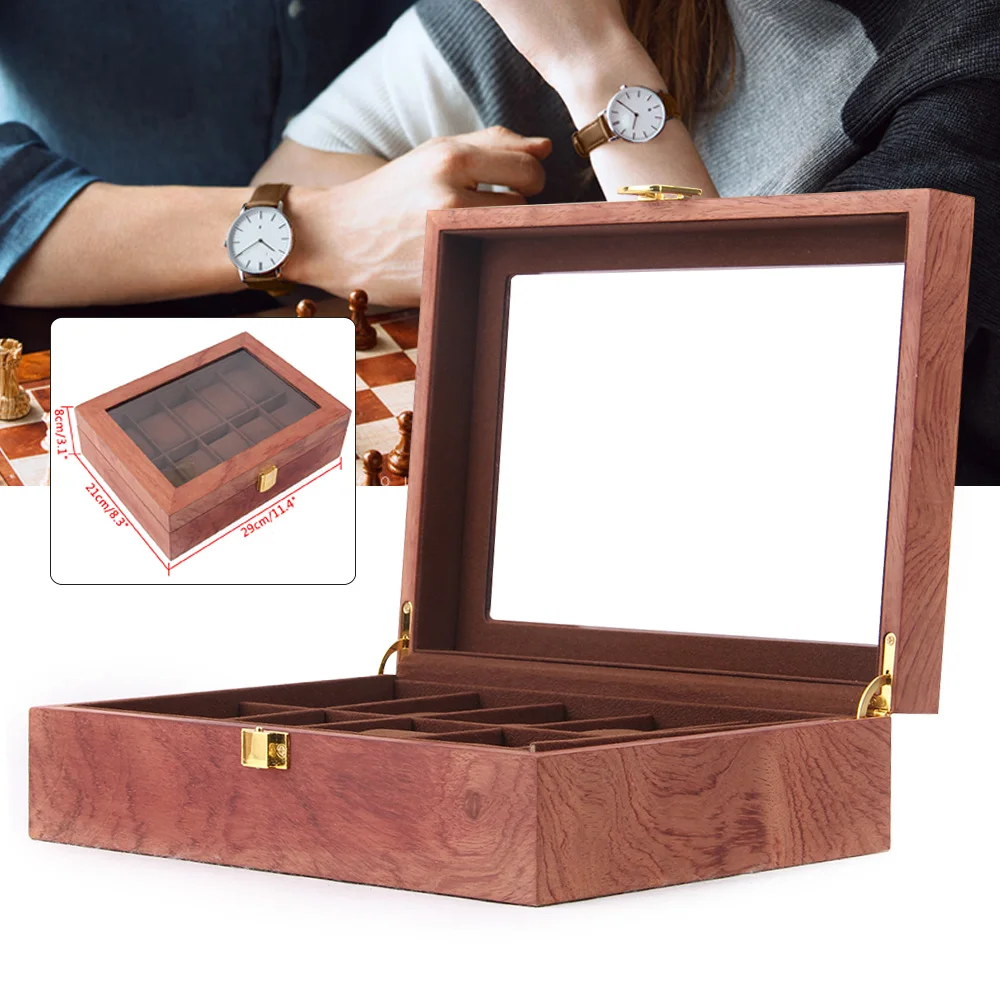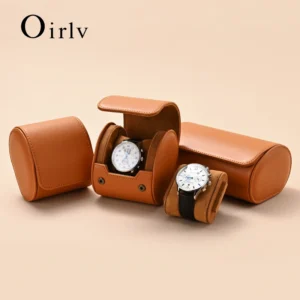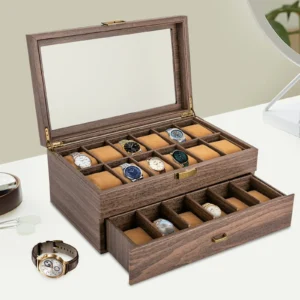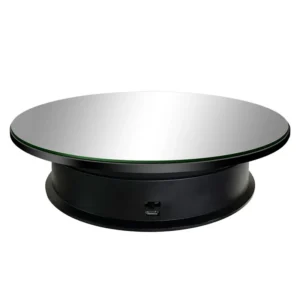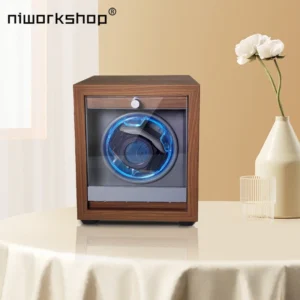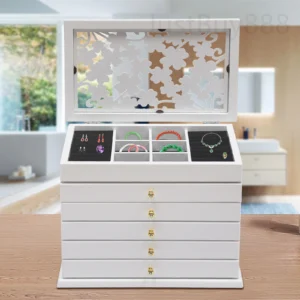Introduction: Why Quality Tools Matter for Watch Enthusiasts
For the passionate watch collector, timepieces represent more than just instruments that tell time—they embody art, engineering excellence, and personal style. Whether you’re just beginning your collection or have been admiring fine watches for years, one truth remains constant: quality tools are essential for properly caring for your timepieces.
Using the right tools can be the difference between preserving your watch’s value and causing costly damage. Imagine trying to remove a bracelet link with an improper screwdriver, only to slip and scratch the polished surface, or attempting to open a case back with pliers instead of a proper case wrench. These mistakes can instantly diminish both the aesthetic appeal and market value of your cherished timepieces.
The enjoyment of watch collecting extends beyond simply wearing and displaying your pieces—it includes developing the skills to properly maintain them. This guide will walk you through both essential tools every collector needs and advanced equipment for those ready to take their hobby to the next level. Our recommendations are based on extensive research into what professional watchmakers and serious collectors actually use.
Proper watch collection storage planning goes hand-in-hand with having the right tools at your disposal, ensuring your timepieces remain in pristine condition for generations to come.
The Essential Watch Collector’s Toolkit: Fundamentals Every Enthusiast Needs
There’s a significant difference between casually owning a few watches and developing a serious collection. While the casual owner might be satisfied with occasional professional servicing, the dedicated collector gains immense satisfaction from handling basic maintenance tasks personally.
Having proper tools transforms the collecting experience from passive ownership to active engagement with your timepieces. You’ll develop a deeper appreciation for the craftsmanship that goes into each watch as you work with them more intimately.
When building your toolkit, it’s helpful to distinguish between essential tools (those every collector should have) and specialized tools (nice-to-have additions as your collection and skills grow). Quality should always be your guiding principle—tools made from superior materials like hardened steel with precise manufacturing tolerances will protect your investment and perform reliably for years.
The sections that follow will guide you through progressively more specialized tools, beginning with the absolute essentials before moving to more advanced equipment. This structured approach allows you to build your toolkit systematically as your skills and collection evolve.
The watch tools every collector needs form the foundation of proper timepiece care and maintenance, enhancing both the longevity and enjoyment of your collection.
1. Spring Bar Tools: The Foundation of Strap Changes
Spring bar tools are perhaps the most frequently used items in any watch collector’s toolkit. These specialized implements allow you to safely remove and replace the spring-loaded bars that secure straps and bracelets to watch cases. Without a proper spring bar tool, you risk scratching the lugs or damaging the bars themselves.
Different types of spring bar tools serve various purposes:
- Forked end tools: Ideal for removing spring bars from watches with drilled lugs or accessible spring bar holes
- Fine pointed end tools: Perfect for watches without drilled lugs where you need to compress the spring bar from the underside
- Combination tools: Feature both forked and pointed ends for maximum versatility
Material quality makes a tremendous difference in spring bar tools. Look for hardened steel construction that won’t bend or break under pressure. Premium options like the Bergeon 6767-F represent the gold standard, offering precision-machined tips that perfectly fit spring bar notches without slipping. While quality tools range from $15 to $50, this is an area where investing in the upper range truly pays dividends.
Proper technique is crucial—always work with the watch case secured and facing downward on a soft surface, apply even pressure, and never force the spring bar. Taking your time with this fundamental task prevents costly scratches to your watch case.
Browse our selection of watch accessories to find high-quality spring bar tools and other essentials for your collection.
2. Precision Screwdriver Sets: Essential for Bracelet Adjustments
Precision screwdrivers are indispensable for watch collectors who want to adjust their own metal bracelets. Unlike standard household screwdrivers, watchmaking screwdrivers feature extremely fine tips machined to exact tolerances that properly fit the miniature screws used in watches.
A comprehensive set should include:
- Multiple flat head sizes (typically 0.8mm to 2.5mm)
- Phillips heads in various sizes
- Specialized heads for proprietary screws used by certain manufacturers
Quality watchmaking screwdrivers are distinguished by their materials and construction. Look for tools with hardened steel tips that won’t deform when torque is applied. Anti-magnetic properties are also important, as magnetized tools can affect your watch’s timekeeping. Premium sets from Bergeon, Horotec, or Wiha feature precision-ground tips, rotating caps for finger pressure, and balanced handles for control.
When using these tools, technique matters greatly. Always apply downward pressure while turning to prevent the screwdriver from slipping out of the screw slot. This simple practice prevents the most common cause of bracelet screw damage—cam-out scratches from slipped screwdrivers.
For collectors with multiple watches, having proper storage for both your timepieces and maintenance tools is essential. Exploring watch storage ideas for collectors can help you create an organized system that protects both your watches and your precision tools.
3. Watch Loupes and Magnifiers: Seeing the Details
Magnification tools allow collectors to appreciate the intricate details of their timepieces while also performing practical functions like verifying authenticity and assisting with maintenance tasks. The ability to clearly see tiny components makes all other watch work significantly easier and more precise.
Watch enthusiasts typically choose between:
- Eye loupes: Traditional handheld or head-mounted magnifiers offering portability
- Stand magnifiers: Hands-free options that provide stable magnification over a work area
- Digital microscopes: Advanced options offering extreme magnification and photo capabilities
For most collectors, magnification in the 5x-10x range proves ideal for general appreciation and basic maintenance tasks. More detailed work, like examining movement components or hallmarks, might require 15x-20x magnification. Quality loupes use optical glass rather than plastic lenses and feature distortion-free viewing with good depth of field.
Proper lighting dramatically enhances the usefulness of any magnification tool. Many modern loupes incorporate LED illumination, which provides even, white light that accurately reveals details without casting harsh shadows. This feature proves particularly valuable when examining watch dials or movement finishing.
When using a loupe, hold it close to your eye first, then bring the watch into your field of vision at the proper focal distance. This technique helps achieve clear focus with minimal eye strain—a crucial consideration during longer inspection sessions.
4. Case Back Opening Tools: Accessing the Movement
Case back tools represent a significant step in a collector’s journey, as they provide access to the watch movement—the heart of any timepiece. Different watch designs require specific opening tools, making this category particularly important to get right.
The main types of case backs and their corresponding tools include:
- Screw-down case backs with notches: Require a jaxa-style case wrench with adjustable pins that fit precisely into the notches
- Snap-on case backs: Need a case knife or pry tool to carefully lift the press-fit back from the case
- Screw-down case backs with slots: Call for specific case back openers that match the exact pattern
- Smooth case backs: Can often be opened with friction-based tools like rubber balls that provide grip
Quality case opening tools feature hardened steel tips that won’t deform under pressure and ergonomic handles that provide sufficient leverage without compromising control. For jaxa wrenches, look for models with adjustable pins that can be positioned to match various case back patterns precisely.
Opening a case back carries inherent risks, including potential damage to the case, gaskets, or movement. Always work on a clean surface, ensure your tool fits perfectly before applying pressure, and move slowly with even force. Never force a case back that resists opening—this often indicates you’re using the wrong tool or technique.
These tools mark the boundary between casual watch ownership and serious collecting, as they allow you to perform more significant maintenance tasks and gain a deeper understanding of your timepieces’ mechanical operation.
5. Cleaning Materials: Preserving Beauty and Function
Proper cleaning tools and supplies are essential for maintaining both the appearance and functionality of your watches. Regular, appropriate cleaning prevents dirt buildup that can affect performance and preserves the aesthetic appeal that makes your timepieces special.
Essential cleaning supplies for every collector include:
- Microfiber cloths: Ultra-soft, lint-free cloths that safely remove fingerprints and light dirt without scratching delicate surfaces
- Rodico cleaning putty: A watchmaker’s clay that gently lifts dust and debris from hard-to-reach areas without leaving residue
- Fine-bristled brushes: Soft brushes specifically designed for cleaning bracelet links and case crevices
- Watch-safe cleaning solutions: Gentle formulations that remove oils and dirt without damaging finishes or gaskets
Premium cleaning materials like Bergeon Rodico putty and Cape Cod polishing cloths represent small investments (typically $10-$30) that deliver significant benefits. These specialized products clean effectively without the risks associated with household cleaners, which can damage watch finishes and deteriorate rubber gaskets.
When cleaning, always work in a well-lit, dust-free environment. Start with the gentlest methods first—often a soft cloth is sufficient for exterior surfaces. Use cleaning putty to lift particles from tight spaces between bracelet links or around bezel edges. Most importantly, avoid liquid cleaners near any watch openings, as moisture entering the case can cause serious damage.
Proper organization of your watch collection should include designated space for these cleaning supplies, keeping them clean and readily available for regular maintenance.
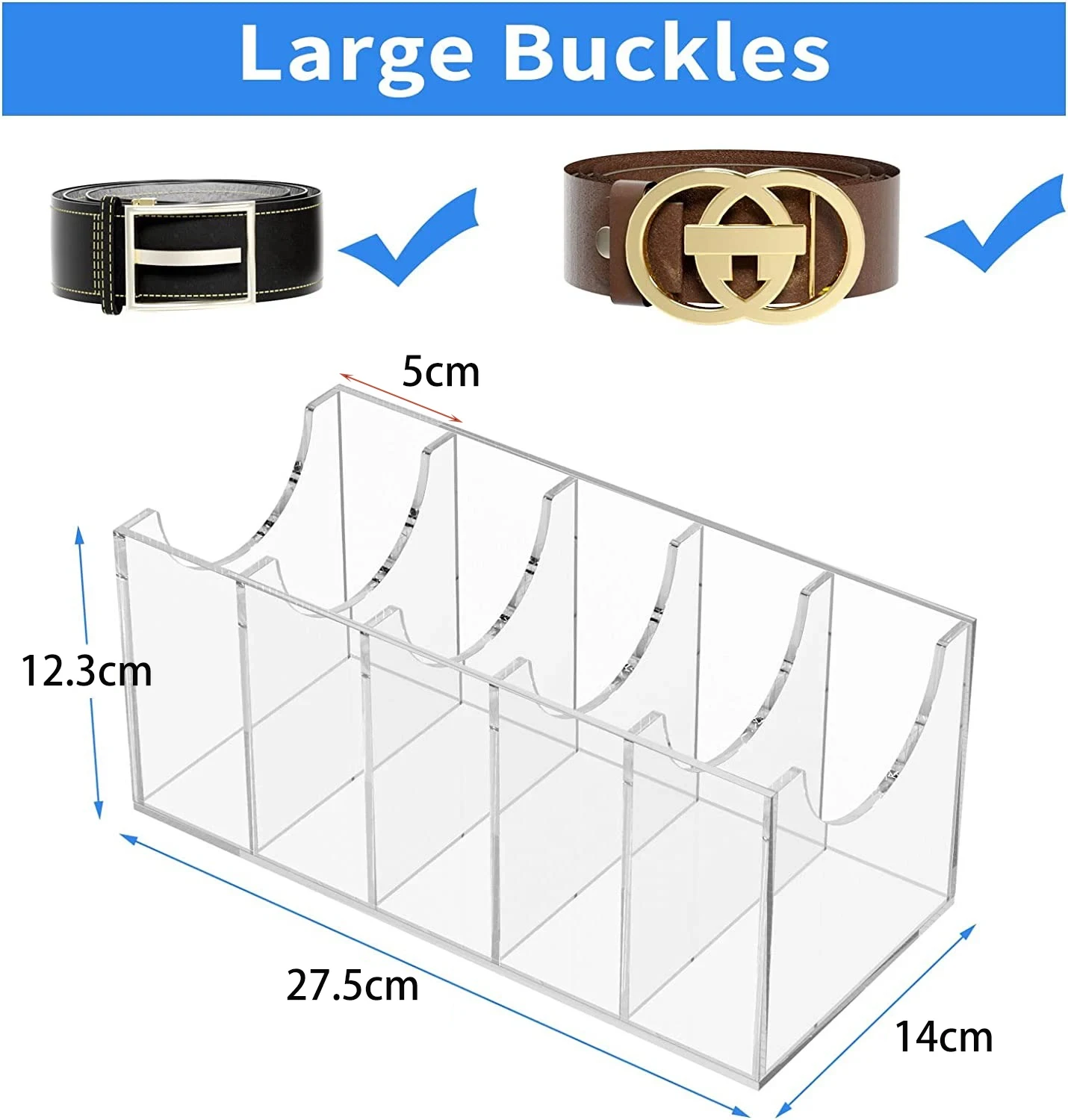
6. Professional-Grade Tools for Advanced Collectors
As your collection grows and your interest deepens, you may find yourself ready to explore more advanced aspects of watch maintenance and appreciation. This transition marks an important evolution in your collecting journey—from basic care to technical engagement with the mechanical marvels you’ve acquired.
Professional-grade tools represent a significant step up in both precision and investment. Before adding these specialized implements to your collection, consider:
- Your comfort level with handling delicate mechanical components
- The types of watches in your collection and their specific maintenance needs
- Your willingness to develop more technical skills through practice or formal training
- The value of your collection relative to the investment in professional tools
Many serious collectors benefit from watch repair courses or training resources before using advanced tools. These educational opportunities provide crucial knowledge about proper techniques and help prevent costly mistakes. Even simple actions can damage valuable movements when performed incorrectly.
The following sections explore specialized tools that expand your capabilities as a collector, allowing you to perform more complex maintenance tasks and develop a deeper understanding of horology’s technical aspects. Each represents a considered investment that brings you closer to the watchmaking tradition your timepieces embody.
7. Timegrapher: Understanding Your Watch’s Performance
A timegrapher is an electronic instrument that provides detailed analysis of a mechanical watch’s performance parameters. For serious collectors, this tool transforms abstract concepts like “running fast” or “running slow” into precise, actionable data about your timepiece’s health.
Modern timegraphers measure three critical parameters:
- Rate: How many seconds the watch gains or loses per day
- Amplitude: The rotational energy in the balance wheel’s swing, indicating mainspring power
- Beat error: The evenness of the balance wheel’s oscillation in each direction
Understanding these measurements allows you to track your watches’ performance over time, identify when service might be needed, and verify the quality of watchmaking work after servicing. For collectors with multiple mechanical watches, this insight proves invaluable for maintenance planning.
Entry-level options like the Weishi 1000 (approximately $150-$200) provide accessible data for hobbyists, while more advanced models offer multiple testing positions and higher precision. For those not ready to invest in dedicated hardware, smartphone timegrapher apps can provide basic readings, though with less accuracy than purpose-built equipment.
When using a timegrapher, testing watches in multiple positions yields the most complete performance picture. Significant variations between positions often indicate adjustment needs, while declining amplitude readings over time suggest service requirements—information that helps you make informed decisions about your collection’s maintenance.
When not working on them, proper collector guide watch holders provide ideal display options that showcase your timepieces while keeping them accessible.
8. Movement Holders and Precision Tweezers: Handling Delicate Components
For collectors interested in more involved maintenance, proper tools for handling watch movements are essential. These specialized implements allow safe manipulation of delicate components that can be damaged by even the slightest mishandling.
Movement holders secure a watch movement firmly while allowing full access to its components. Quality holders feature:
- Adjustable brass or nylon jaws that grip securely without marking delicate parts
- Multiple positioning options to access different areas of the movement
- Stable bases that prevent tipping during delicate operations
Watchmaking tweezers represent another critical tool category, with different styles serving specific functions:
- #2 or #3 fine-point tweezers: Ideal for general handling of small parts
- #5 antimagnetic tweezers: Perfect for steel components like screws and springs
- Brass or fiber-tipped tweezers: Designed for handling delicate surfaces without scratching
Quality is paramount with these tools—precision-manufactured tweezers from brands like Dumont or Bergeon feature perfectly aligned tips, appropriate tension, and balanced weight that enhances control during delicate operations. While premium options range from $30 to $200, the protection they provide to valuable movements justifies the investment.
Proper technique involves a steady hand, good lighting, and patience. Always practice with non-valuable movements before working on important watches, as developing the necessary dexterity and control takes time. When handling movements, work in a clean, dust-free environment with minimal air movement to prevent losing tiny components.
9. Demagnetizers: Solving a Common Watch Problem
Magnetism represents one of the most common yet least understood issues affecting mechanical watches. Modern life surrounds us with magnetic fields from smartphones, tablet covers, speakers, and other electronic devices that can magnetize watch components, causing timing irregularities.
A demagnetizer provides a simple solution to this pervasive problem by:
- Generating an alternating magnetic field that neutralizes residual magnetism
- Restoring proper function to affected watches without disassembly
- Providing a quick fix for a problem that would otherwise require professional service
Signs your watch might be magnetized include:
- Sudden, significant timing changes (usually running fast)
- Erratic timekeeping that doesn’t follow a consistent pattern
- Movement stopping despite being fully wound
Standard watchmaker’s demagnetizers range from $20 for basic models to $100 for professional units. Using them correctly involves placing the watch on the demagnetizer, activating it briefly, then slowly withdrawing the watch while the field remains active. This process gradually reduces the magnetic field strength, effectively demagnetizing the components.
As a preventive measure, keep watches away from strong magnetic sources whenever possible. This simple precaution reduces the need for demagnetization and helps maintain more consistent timekeeping.
Our watch organizers and accessories offer solutions for both storing your collection and organizing your growing tool collection in one convenient location.
10. Creating Your Watch Maintenance Workspace
A properly organized workspace dramatically improves both the safety and enjoyment of watch maintenance activities. Even with the finest tools, working in a cluttered or poorly equipped space increases the risk of accidents and lost parts.
Essential components of an effective watch maintenance workspace include:
- Work mat: A soft, contrasting surface (typically black or dark blue) that protects watch components and makes small parts visible
- Task lighting: Adjustable, shadow-free illumination that reduces eye strain and improves visibility
- Dust cover: A clear dome or box that protects works-in-progress from dust and accidental disturbance
- Tool organization: Systems that keep frequently used tools accessible and properly arranged
- Parts trays: Segmented containers that prevent tiny components from rolling away or becoming mixed
Creating this setup need not be expensive—beginners can establish a functional workspace for $50-$100, while more elaborate setups might reach $200 or more depending on quality and features. The key is systematic organization that supports your work process.
Position your workspace away from high-traffic areas and air currents that might disturb small parts. If possible, dedicate a space that can remain set up between projects, as repeatedly establishing a temporary workspace increases the risk of missing components or tools.
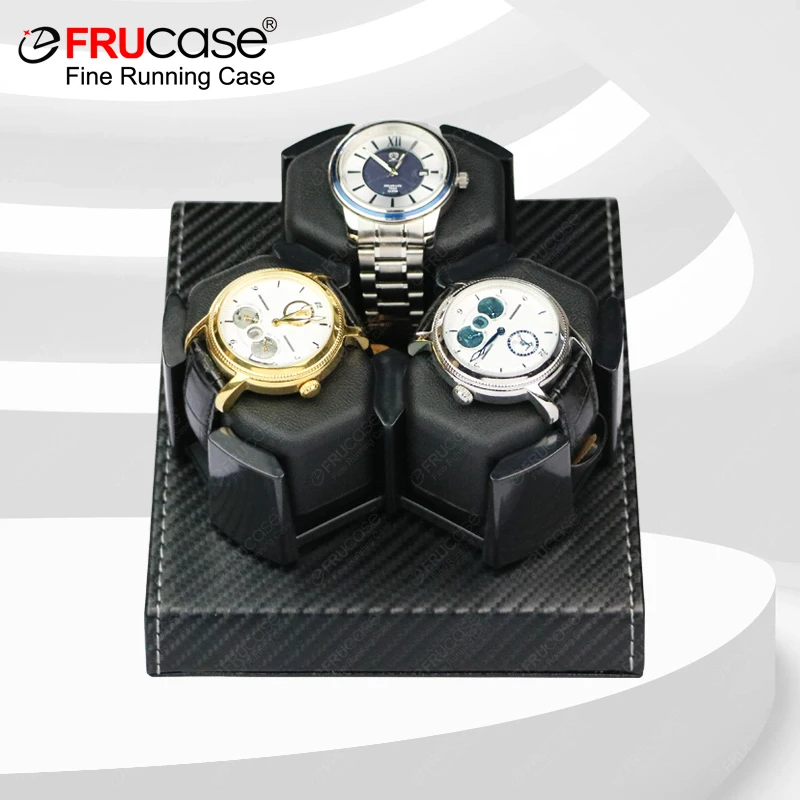
Storage Solutions: Protecting Your Watch Collection
Proper storage complements your maintenance toolkit by preserving your watches when they’re not being worn or serviced. Quality storage solutions protect against dust, moisture, UV exposure, and physical damage while showcasing your collection appropriately.
Collectors typically choose among several storage options:
- Watch boxes: Provide individual compartments lined with soft materials that prevent scratches
- Watch winders: Keep automatic watches running through programmed rotation patterns
- Travel cases: Offer portable protection for watches when away from home
- Display cases: Combine storage with visibility for appreciating your collection
When selecting storage, consider construction materials carefully. Quality options feature solid wood construction, lined with non-abrasive materials like microsuede or velvet. For watch winders, look for programmable units offering adjustable turns per day (TPD) settings that match your specific watches’ requirements.
Environmental factors significantly impact long-term storage success. Keep watches away from extreme temperatures, direct sunlight, and high-humidity areas. For valuable collections, consider humidity control systems that maintain optimal conditions year-round.
Understanding how to compare types of watch storage helps you select solutions that meet both your practical needs and aesthetic preferences, completing your watch collector’s ecosystem.
Watch Accessories, Watch Holder
$94.51 Select options This product has multiple variants. The options may be chosen on the product pageSingle Watch Travel Case, Watch and Jewelry Box, Watch Roll Travel Case
Price range: $93.44 through $140.65 Select options This product has multiple variants. The options may be chosen on the product pageMen's Watch Organizer, Watch Display Case, Watch Organizer
Price range: $112.68 through $169.45 Select options This product has multiple variants. The options may be chosen on the product pageRotating Watch Holder, Watch Holder
Price range: $93.28 through $93.35 Select options This product has multiple variants. The options may be chosen on the product pageAutomatic Watch Winder, Single Watch Winder, Wooden Watch Holder
$201.76 Select options This product has multiple variants. The options may be chosen on the product pageWatch and Jewelry Box, Watch Drawer Organizer
Price range: $181.91 through $233.38 Select options This product has multiple variants. The options may be chosen on the product page
Where to Buy Quality Watch Tools
Finding reliable sources for quality watch tools can be challenging, as the market includes everything from professional-grade implements to questionable mass-produced options. Knowing where to shop helps ensure you receive authentic tools that perform as expected.
When sourcing watch tools, consider these options:
- Specialized watchmaking suppliers: Offer comprehensive selections with professional-quality assurance
- Watch enthusiast retailers: Provide curated selections specifically for collectors rather than professionals
- General online marketplaces: Provide wide selection but require careful vendor evaluation
When purchasing online, look for detailed product descriptions that specify exact materials, manufacturing origins, and intended use. Authentic professional tools will typically feature clear branding and precise specifications rather than generic descriptions.
For beginners, starter kits can provide good value by including essential tools at a lower combined price. However, as your skills advance, investing in individual high-quality tools often yields better long-term results than continuing with kit-quality implements.
Before making significant investments, research specific tools through watch enthusiast forums and communities where actual users share their experiences. These real-world insights often reveal performance details not evident from product descriptions alone.
For displaying watches while working on others, our watch display holders provide elegant and functional solutions that keep your collection visible and protected.
FAQ: Common Questions About Watch Tools and Maintenance
Do I need all these tools as a beginner collector?
Start with the essentials: a quality spring bar tool, precision screwdriver set, microfiber cloths, and basic cleaning supplies. Add more specialized tools as your collection grows and your maintenance skills develop.
Can I use generic tools instead of watch-specific ones?
While household tools might seem similar, watch-specific tools are precisely manufactured for the unique requirements of timepieces. Generic alternatives often lead to damage through improper fit or material incompatibility.
How do I maintain my watch tools?
Keep tools clean and free of debris, particularly precision implements like screwdriver tips and tweezers. Store them in protective cases away from moisture and extreme temperatures. Occasionally apply light machine oil to metal components to prevent corrosion.
What’s the minimum toolkit for a new collector?
A quality spring bar tool, precision screwdriver set, microfiber cloths, and cleaning solution form a practical starter kit that handles most basic maintenance needs.
Are expensive tools always better?
While price often correlates with quality, mid-range tools from respected manufacturers frequently offer the best value for collectors. Focus on proper materials (hardened steel, brass, antimagnetic properties) and precise manufacturing rather than price alone.
Building Your Collection of Tools Over Time
Developing your watch toolkit represents a journey parallel to building your watch collection itself. A strategic approach helps maximize value while ensuring you have the right tools when needed.
Begin with versatile essentials that address your most immediate needs—typically strap changes, bracelet adjustments, and basic cleaning. These foundational tools deliver immediate benefits at a modest investment (approximately $75-100 for quality options).
As your skills and confidence grow, add specialized tools that expand your capabilities. Focus on quality over quantity, investing in one premium tool rather than several mediocre alternatives. This approach might increase initial costs but reduces long-term expenses by avoiding replacements for failed tools.
Watch for “quality plateaus” where additional spending yields diminishing returns. For example, a $40 spring bar tool might offer 95% of the functionality of a $100 version, making the less expensive option more practical for most collectors.
Consider your collection’s specific needs when prioritizing purchases. A collection focused on vintage watches might benefit from specialized case opening tools, while modern watch enthusiasts might prioritize bracelet adjustment implements. Let your unique collection guide your toolkit development.
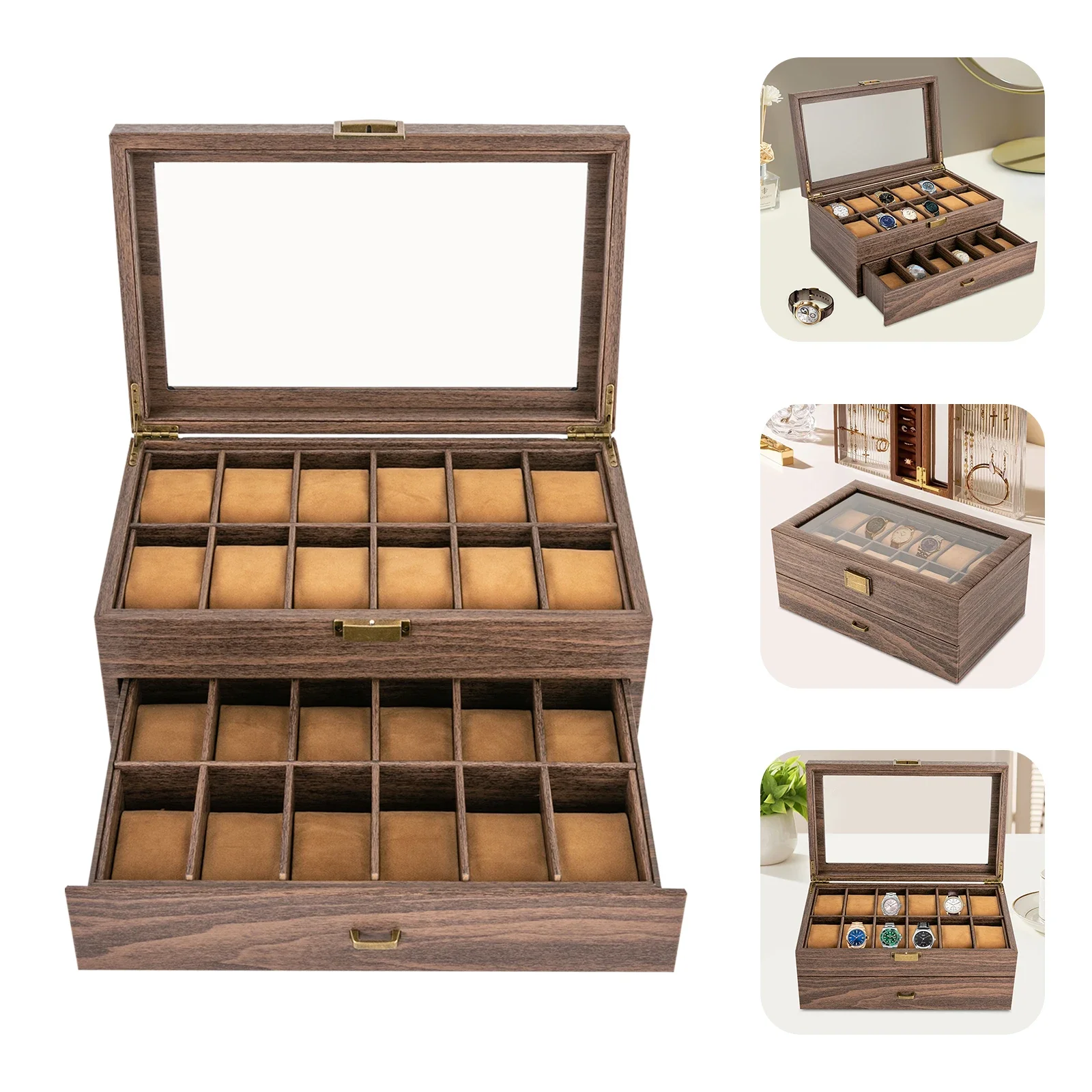
Conclusion: Equipping Yourself for Watch Collecting Success
Throughout this guide, we’ve explored tools ranging from essential spring bar implements to advanced timegraphers—each serving a specific purpose in the care and appreciation of fine timepieces. These carefully selected instruments form the foundation of an enriching collecting experience.
Quality tools represent more than mere convenience; they embody a commitment to preserving the craftsmanship and value embodied in your watches. The precision engineering that makes your timepieces special deserves maintenance equipment of corresponding quality—tools that complement rather than compromise the watchmaker’s art.
Beyond preservation, proper tools transform watch collecting from passive ownership to active appreciation. Each maintenance task you master deepens your connection to horology’s rich traditions and enhances your understanding of the mechanical marvels adorning your wrist.
As you build your collection of both watches and tools, remember that quality consistently outweighs quantity. A thoughtfully curated selection of premium implements will serve you better than an extensive array of inferior options. Invest wisely, learn continuously, and enjoy the satisfying relationship with your timepieces that only proper tools can facilitate.

